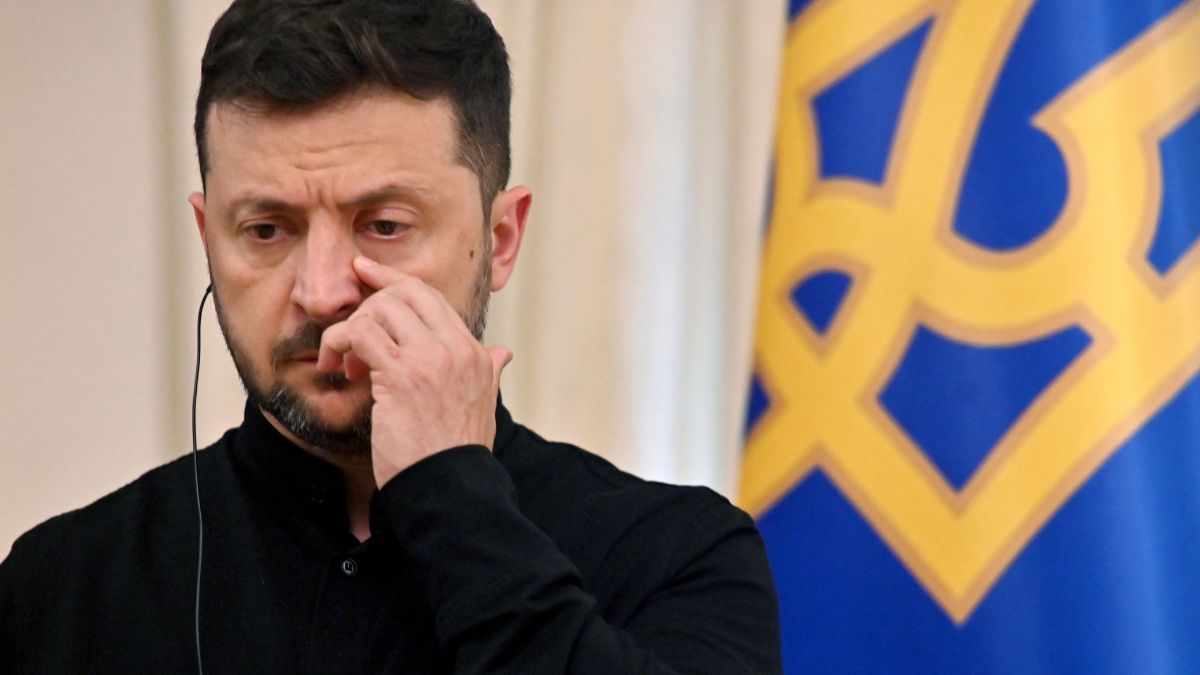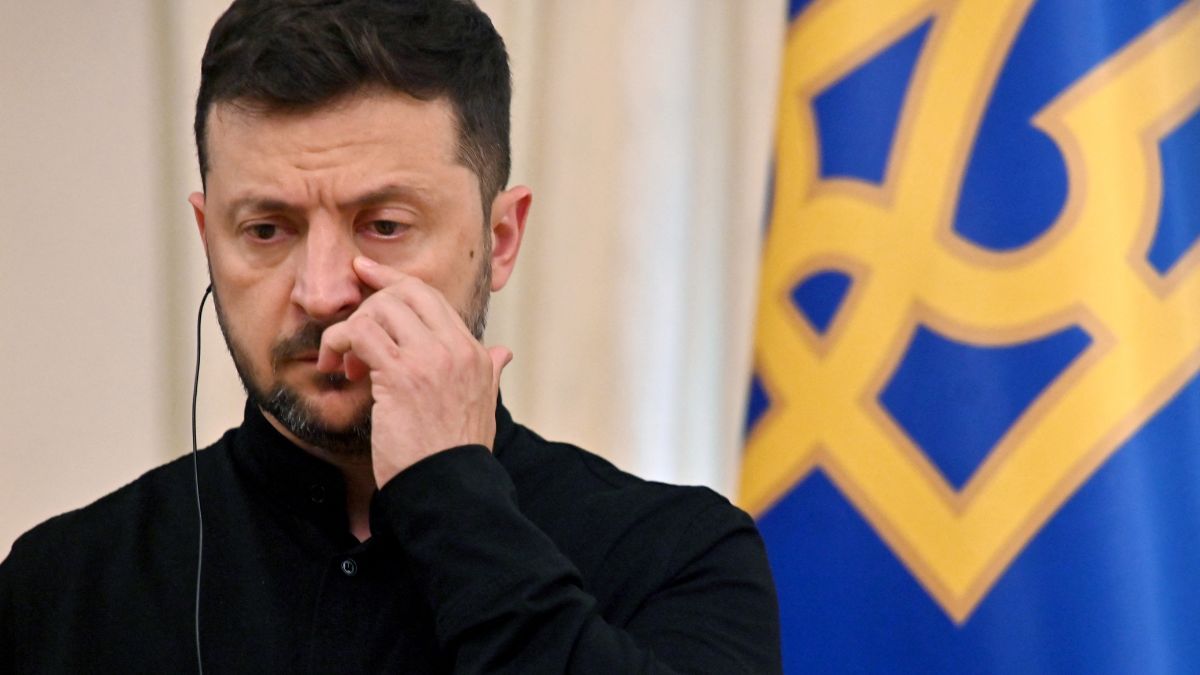Ukrainian president Volodymyr Zelenskyy returned to Ukraine on Friday from a whirlwind of diplomatic meetings without big aid packages from the United States and Europe. Political disagreements in Washington and the European Union have prevented any help to Ukraine. Over Hungary’s objections, EU leaders admitted early Friday that they would be unable to agree a multiyear aid package worth $54.5 billion (Rs 45,24,53 crore). The EU vote on the multibillion-dollar aid package has now been pushed back to January, and the United States Congress may not reach an agreement on sending more military equipment before the end of the year, despite Ukraine’s soldiers remaining blocked on the battlefield. Ukrainian president
Volodymyr Zelenskyy issued a warning to allies as he hopscotched continents urging them to support his war-scarred country as it defends itself against the Russian invasion. Moscow’s “real target,” he said in Washington, “is freedom.” That idea functioned as a rallying cry as the West lined up behind Ukraine at the start of the war. But 21 months later, support for Ukraine has become complicated, especially when it comes to spending government money. Here’s how it all unfolded: Pleas for unity and aid Zelenskyy received a hero’s welcome around the world from the start of the war, but now he’s having to make in-person appeals for aid as his country fights, he said this week, “for our freedom and yours.” “It’s very important,” he said in Washington, “that by the end of this year we can send very strong signal of our unity to the aggressor and the unity of Ukraine, America, Europe, the entire free world.” The risk of inaction, he says: emboldening Russian president Vladimir Putin. “If there’s anyone inspired by unresolved issues on Capitol Hill, it’s just Putin and his sick clique,” Zelenskyy told an audience of military leaders and students at the National Defence University in Washington. [caption id=“attachment_13514212” align=“alignnone” width=“640”] The White House says funding for Ukraine has run out and it has been increasing pressure on Congress to pass stalled legislation to support the war against Russia. AP[/caption] He underscored the urgency in an interview with The Associated Press earlier this month, saying the winter posed additional challenges after a summer counteroffensive affected by enduring shortages of weapons and ground forces. “Winter as a whole is a new phase of war,”" Zelenskyy said in an exclusive interview this month in Kharkiv in northeastern Ukraine. Tangled support in the US Close to half of the US public thinks the country is spending too much on aid to Ukraine, according to polling from The Associated Press-NORC Centre for Public Affairs Research. Those sentiments, driven primarily by Republicans, help explain the hardening opposition among conservative GOP lawmakers on Capitol Hill who are rebuffing efforts from President Joe Biden to approve more aid for Ukraine.
**Also Read: Will the West stop funding Ukraine's war effort?** Republicans have linked Ukraine’s military assistance to US border security, injecting one of the most divisive domestic political issues — immigration and border crossings — into the middle of an intensifying debate over wartime foreign policy. Zelenskyy’s visit to Washington this week — where he appeared at a news conference with Biden and was squired around Capitol Hill by leading lawmakers — did nothing to change that. Congress left town for the holidays on Thursday without a deal to send some $61 billion (Rs 50,63,42 crore) to Ukraine. A holdout in Europe There were two questions before the EU on Friday: Whether to advance Ukraine’s future membership in to the bloc, and whether to approve a $54 billion (Rs 44,82,27 crore) financial aid package that Ukraine urgently needs to stay afloat. Hungary’s Viktor Orban left the room, effectively abstaining on the first question. Zelenskyy led a round of celebration for his war-ravaged country, tweeting thanks to “everyone who helped” the EU take the step. [caption id=“attachment_13514222” align=“alignnone” width=“640”]
European Council President Charles Michel, front right, speaks with Ukraine’s president Volodymyr Zelenskyy, front second right, and Hungary’s prime minister Viktor Orban, second row centre, as they pose with other European Union leaders for a group photo at an EU summit in Brussels. AP[/caption] But Orban wasn’t done. He reappeared hours later to veto the proposal for wartime aid to Ukraine to prop up its war-weakened economy. He was the only member to vote against the package. “Summary of the nightshift: veto for the extra money to Ukraine,” Orban wrote on X, the platform formerly known as Twitter. He also suggested that he had plenty of time to block Ukraine’s drive to join the EU down the road. EU explores alternatives for support In the US, Senate negotiators and the Biden administration were still racing to strike a compromise before the end of the year. The Democratic-led Senate planned to come back next week in hopes of passing the package. But the Republican-led House showed no such inclination. US aid to Ukraine hasn’t dried up, but it’s complicated. The Pentagon and State Department on 6 December said the US is sending a $175 million (Rs 14,52 crore) package of military aid to Ukraine, including guided missiles for the High Mobility Artillery Rocket Systems (HIMARS), anti-armour systems and high-speed anti-radiation missiles, the Pentagon and State Department said. The EU hasn’t given up either. French president Emmanuel Macron said later that there were other ways the EU could send aid to Ukraine. But he urged Orban to “act like a European” and support Zelenskyy’s country, European Council President Charles Michel said leaders would reconvene in January to try to break the deadlock. With inputs from AP
The West lined up behind Ukraine at the start of the war. But 21 months later, its support has become complicated, especially when it comes to spending government money. On Friday, President Volodymyr Zelenskyy returned home without the billions of dollars in aid requested from the US and the EU
Advertisement
End of Article


)
)
)
)
)
)
)
)
)



